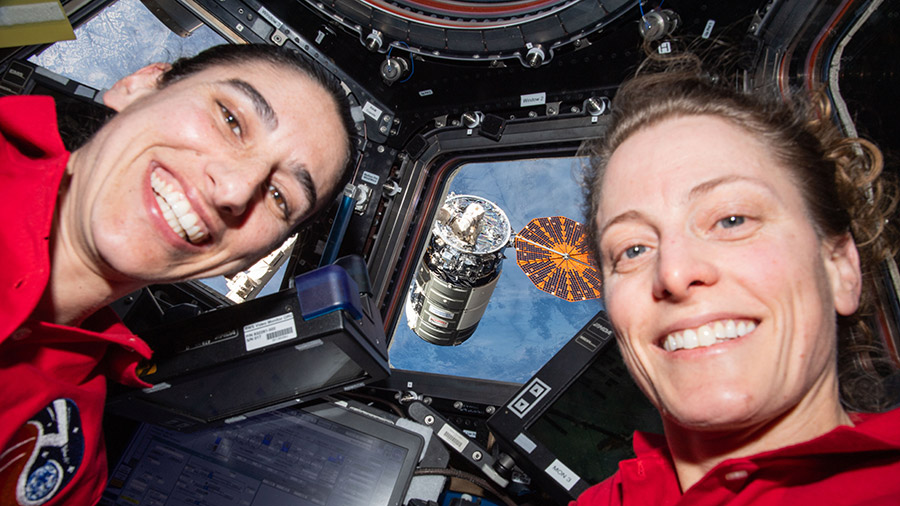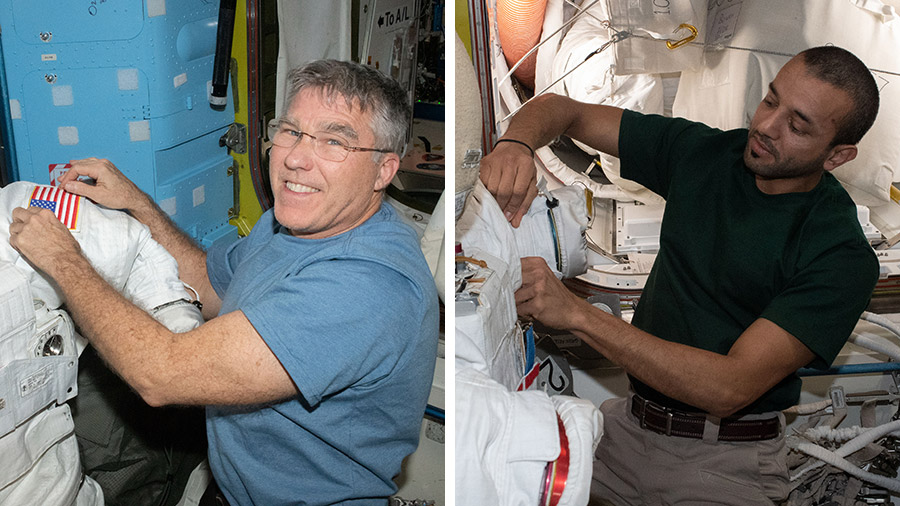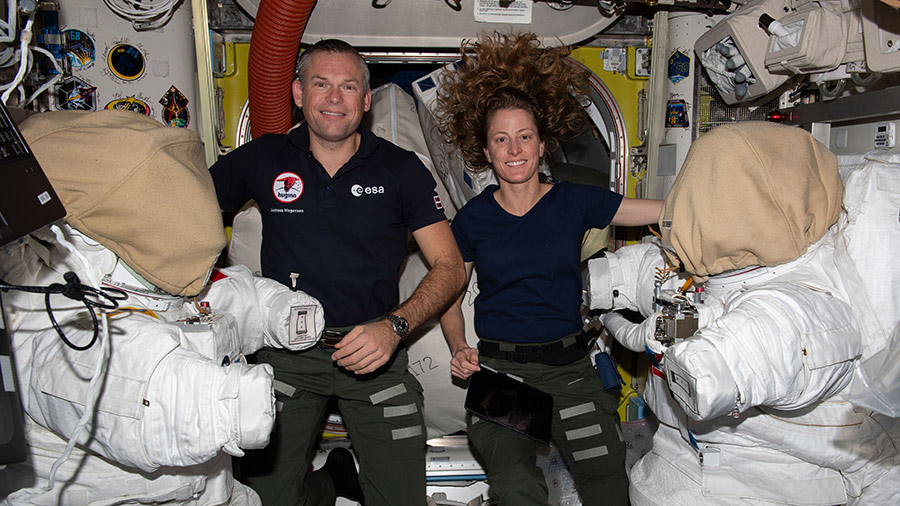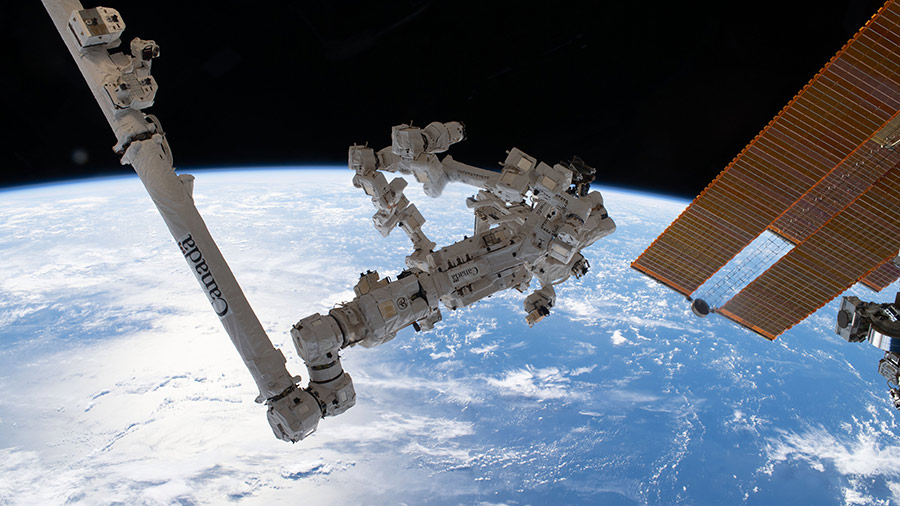
The International Space Station has returned to its standard configuration of seven Expedition 70 crew members conducting advanced microgravity research and orbital lab maintenance. The four Axiom Mission 3 guests ended their stay at the orbital outpost on Wednesday and are targeting a return to Earth on Friday.
Biomedical science and space physics dominated the research schedule on Thursday as the crew investigated human immunity, robotic surgery, and optical fibers. The investigations have the potential to improve astronaut health, expand commercial space opportunities, and benefit the communications industry on Earth.
Flight Engineers Jasmin Moghbeli of NASA and Satoshi Furukawa from JAXA (Japan Aerospace Exploration Agency) began Thursday morning collecting their blood and saliva samples for analysis. Next, Commander Andreas Mogensen spun the blood samples in a centrifuge preparing the samples for stowage in a science freezer and others for placement in an incubator. The high-flying lab work will help doctors understand how spaceflight impacts an astronaut’s immune system.
Moghbeli then spent the afternoon, assisted by cosmonaut Oleg Kononenko, inspecting the condition of structures inside the Zvezda service module. Furukawa collected metallic samples exposed to extreme heat then cleaned the inside of the Electrostatic Levitation Furnace, a specialized, high-temperature furnace. Mogensen later photographed the Moon then readied the Columbus laboratory module for the installation of a new Metal 3D Printer.
NASA Flight Engineer Loral O’Hara installed a miniature surgical robot in the Destiny laboratory module that will demonstrate remotely controlled, or tele-operated, surgical techniques from Earth. Afterward, O’Hara worked in the Microgravity Science Glovebox testing the production of optical fibers superior to those manufactured in Earth’s gravity environment.
Prior to assisting Moghbeli, Kononenko strapped on a sensor-packed cap that measured his responses while practicing futuristic spacecraft and robotic piloting techniques on a computer. Roscosmos Flight Engineer Nikolai Chub checked out a carbon dioxide removal device then replaced an air conditioner power supply unit. Flight Engineer Konstantin Borisov spent his day servicing orbital plumbing gear, testing video hardware, and replacing smoke detectors.
Learn more about station activities by following the space station blog, @space_station and @ISS_Research on X, as well as the ISS Facebook and ISS Instagram accounts.
Get weekly video highlights at: https://roundupreads.jsc.nasa.gov/videoupdate/
Get the latest from NASA delivered every week. Subscribe here: www.nasa.gov/subscribe




